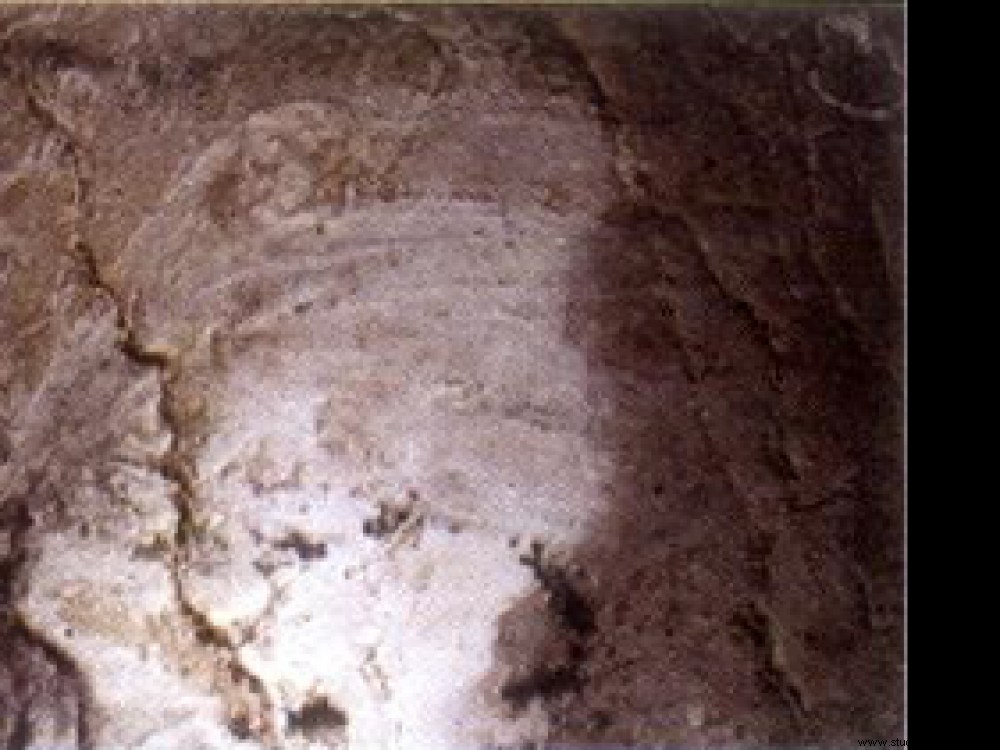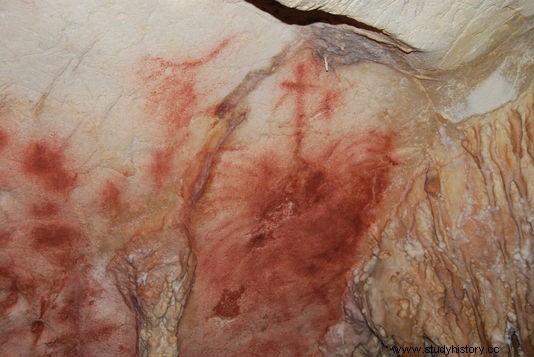 One of the sheaf figures present in the Megaloceros gallery, in the Chauvet-Pont d'Arc cave, can represent a volcanic eruption.
One of the sheaf figures present in the Megaloceros gallery, in the Chauvet-Pont d'Arc cave, can represent a volcanic eruption. GERBS. Several signs reproduced with fingers, in ocher or in charcoal on the walls of the Chauvet cave, one of the oldest decorated caves in the world (36,000 years old), resemble long colored sheaves. Located in the Megaloceros Gallery – one of the tunnels of the immense cavity – in that of the Belvedere as well as in the entrance, they could evoke an eruption linked to the intense volcanic activity experienced by the region of Bas- Vivarais, at the extreme south of the Massif Central, between 40,000 and 30,000 years ago. This is at least the bold proposal, so complex is the interpretation of parietal art figures, launched by a team of scientists in the journal Plos One . "This Strombolian-like volcanic activity took place 35 km northwest of the cave. It is likely that humans living in the area of the Ardèche river have witnessed one or more of these eruptions and that they have been struck by these large incandescent sheaves thrown high into the sky" , explains Valérie Féruglio, one of the signatories of the article, a member of the research team who has been working for 20 years in the decorated cavity. "These signs are unique and we do not know of them elsewhere in Franco-Cantabrian art ", adds the specialist.

One of the plumed parietal art motifs that could represent a volcanic event 36,000 years ago. © Dominique Genty/LSCE/IPSL/CNRS
DATING. The age of the main sheaf pattern was obtained by carbon-14 dating using charcoal pigments taken from the representation of the megaloceros, a huge deer that overlaps the sign in the form of an eruption. This dating and others obtained by thermoluminescence were compared with those obtained by physicists, geographers and geologists from the LSCE (Laboratory of Climate and Environmental Sciences) involved in the study of the ancient volcanoes of Vivarais, such as Dominique Genty. It was the matches obtained that led the researchers to wonder if they were not faced with a reminiscence of a lava fountain typical of Strombolian eruptions.
If this hypothesis were confirmed, these abstract lines could constitute the oldest known representation of volcanic eruption. It would predate by 34,000 years that described by Pliny the Younger during the eruption of Vesuvius in 79 AD - responsible for the destruction of Pompeii - and by 28,000 years the mural fresco unearthed at the Neolithic site of Catal Höyük, in Turkey and described in 2014 as representing the Hasan Dagi volcanic eruption.
